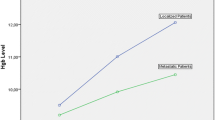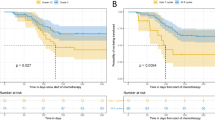Background and Results:
Anemia is a well-known risk factor for decreased local control and survival in patients undergoing curative radiotherapy. There is clear evidence from recent clinical investigations that anemia is an independent risk factor and hemoglobin (Hb) levels during radiotherapy are important (and not pretreatment Hb levels). The most likely explanation for the prognostic impact is the association with tumor hypoxia. An “optimal” Hb range with regard to tumor oxygenation seems to exist, and Hb levels < 11 g/dl and > ~15 g/dl impair tumor oxygenation but have (over a broader range) no significant impact on normal tissue oxygenation. There is some evidence from retrospective and prospective studies that the response to radiotherapy and the prognosis, especially in cervical cancers, might be improved if the Hb levels during radiotherapy can be maintained in the optimal range, either by transfusions or by erythropoietin. The effect of any antianemic therapy should be analyzed according to whether or not treatment was successful with regard to achieving optimal Hb levels during irrradiation. Erythropoietin is probably more effective in steadily increasing and stabilizing Hb levels, but bears the risk of overcorrection of Hb levels. The clinical relevance of erythropoietin receptors on tumor cells remains questionable.
Conclusions:
Treatment of anemia with the objective of improving local control and survival in radiotherapy patients is probably more difficult and sophisticated than coping with symptoms of anemia or improving quality of life. Nevertheless, the potential of antianemic treatment is high on the basis of experimental and clinical data, and further clinical trials are warranted.
Hintergrund und Ergebnisse:
Eine Anämie ist ein Risikofaktor bei Patienten, die mit kurativer Intention bestrahlt werden. Anämische Patienten haben ein höheres Lokalrezidivrisiko und schlechtere Überlebensraten. Zahlreiche klinische Untersuchungen der letzten Jahre haben gezeigt, dass die Anämie ein unabhängiger Risikofaktor ist und dass vor allem niedrige Hämoglobin-( Hb-)Werte während einer mehrwöchigen Strahlentherapie von Bedeutung sind. Als Erklärung kommt vor allem der Zusammenhang zwischen Anämie und Tumorhypoxie in Betracht. Es scheint ein „optimaler“ Hb-Bereich für die Tumoroxygenierung zu bestehen, denn Hb-Werte < 11 g/dl und > ~15 g/dl verschlechtern die Tumoroxygenierung, haben aber keinen Einfluss auf die Oxygenierung des Normalgewebes. Zahlreiche retrospektive und prospektive Studien deuten darauf hin, dass sich die Prognose vor allem bei Patientinnen mit Zervixkarzinomen verbessern lässt, wenn die Hb-Werte während der Strahlentherapie im optimalen Bereich gehalten werden. Der Effekt jeder antianämischen Therapie muss dabei daran gemessen werden, inwieweit durch diese Therapie optimale Hb-Werte erreicht werden. Erythropoetin scheint gegenüber Transfusionen sicherer zu wirken, wenn ein stabiler Anstieg der Hb-Werte erreicht werden soll; andererseits birgt Erythropoetin das Risiko einer Überkorrektur des Hb-Werts. Ob Erythropoetinrezeptoren auf Tumorzellen eine klinische Bedeutung haben, ist weiterhin unklar.
Schlussfolgerungen:
Die Behandlung der Anämie bei Tumorpatienten mit dem Ziel, das Ansprechen auf eine Strahlentherapie und die Prognose zu verbessern, ist wahrscheinlich komplizierter als die symptomatische Behandlung der Anämie oder die Verbesserung der Lebensqualität. Trotzdem birgt diese Therapie ein hohes Potential für Verbesserungen der radioonkologischen Behandlungen, und sie sollte in weiteren Studien geprüft werden.
Similar content being viewed by others
Author information
Authors and Affiliations
Corresponding author
Additional information
This paper is dedicated to Professor Rolf Sauer, MD, chair of the Department of Radiation Oncology, University of Erlangen, on the occasion of his 65th birthday.
Rights and permissions
About this article
Cite this article
Dunst, J. Management of Anemia in Patients Undergoing Curative Radiotherapy. Strahlenther Onkol 180, 671–681 (2004). https://doi.org/10.1007/s00066-004-9191-2
Issue Date:
DOI: https://doi.org/10.1007/s00066-004-9191-2




